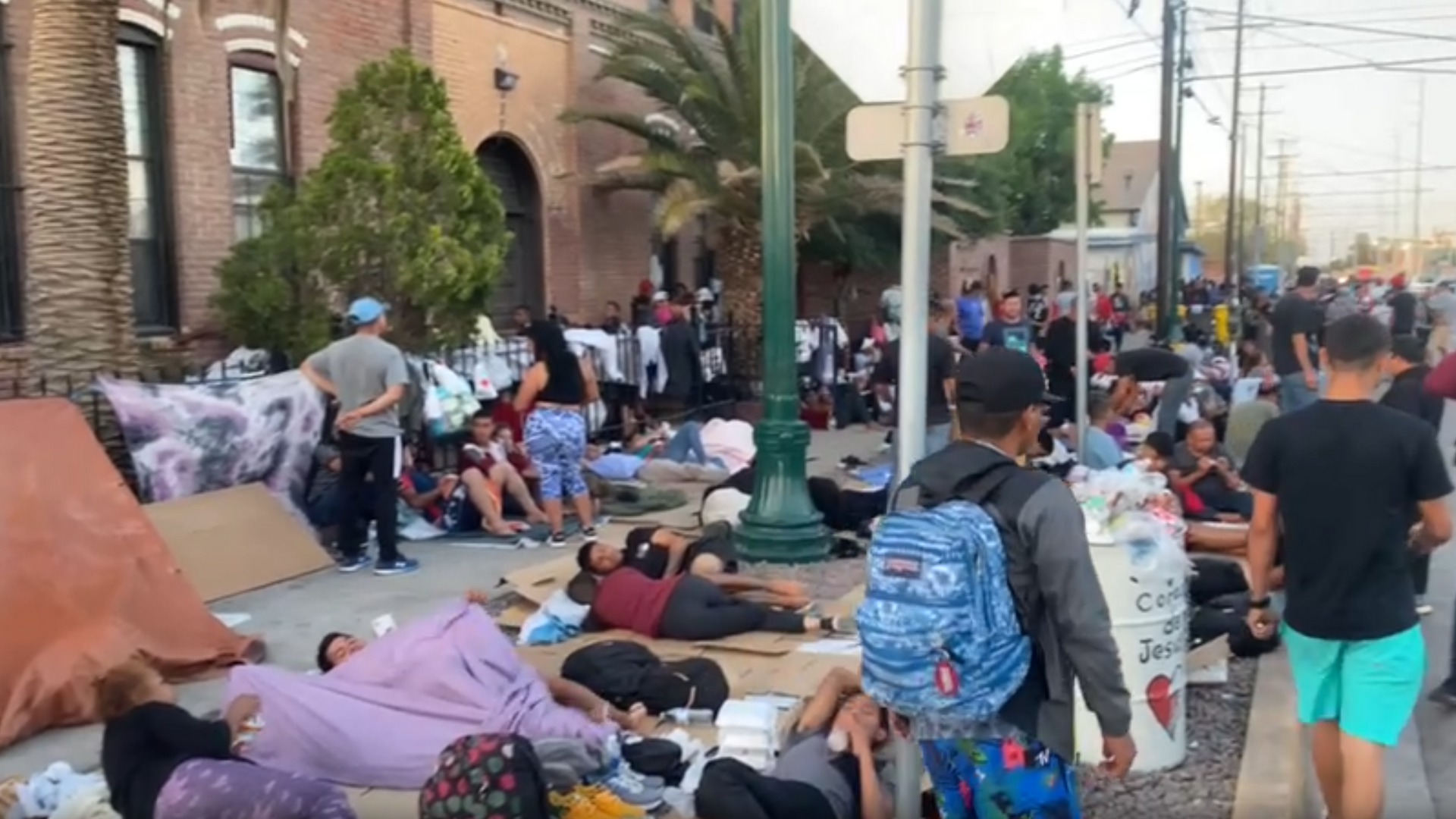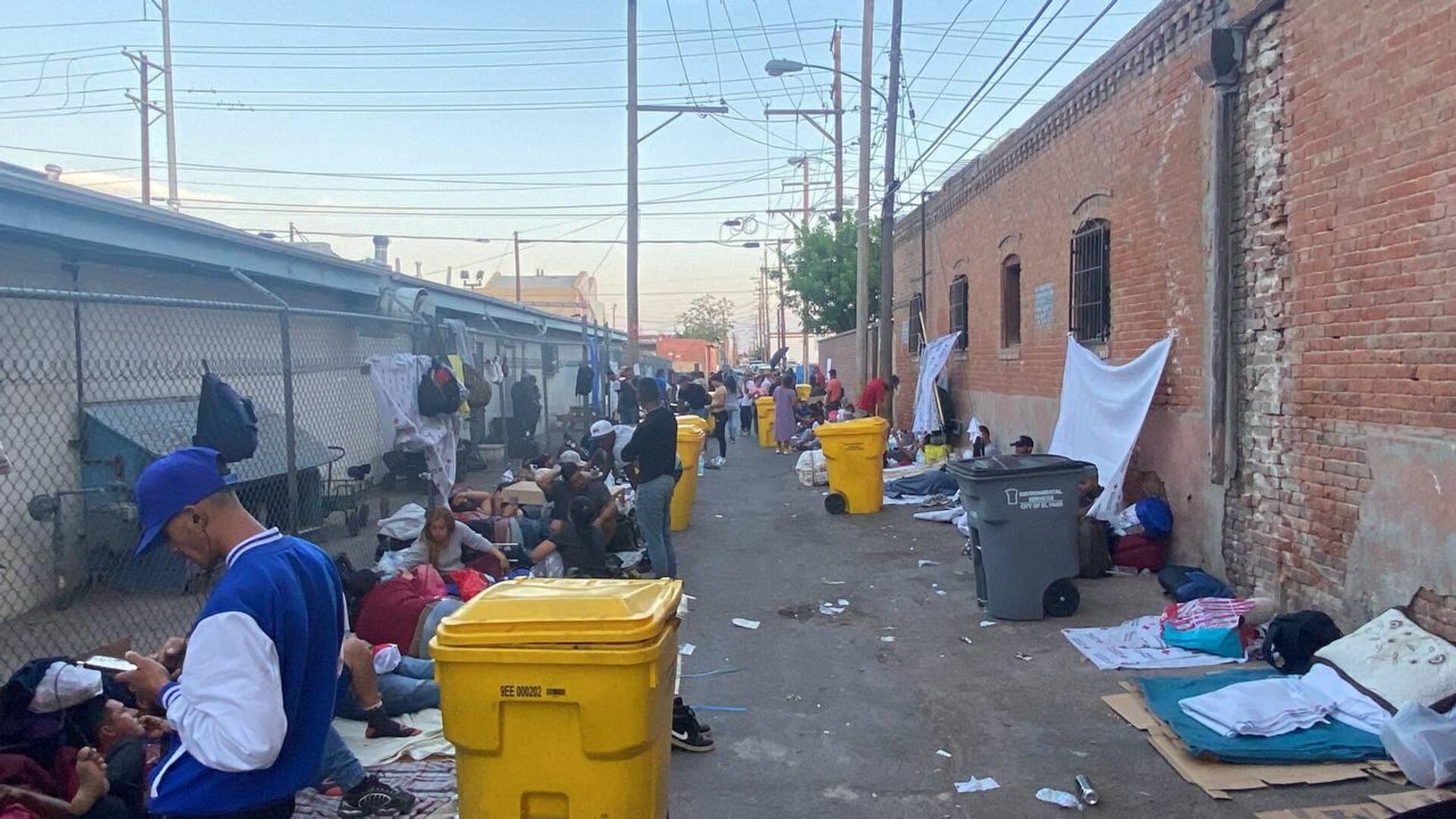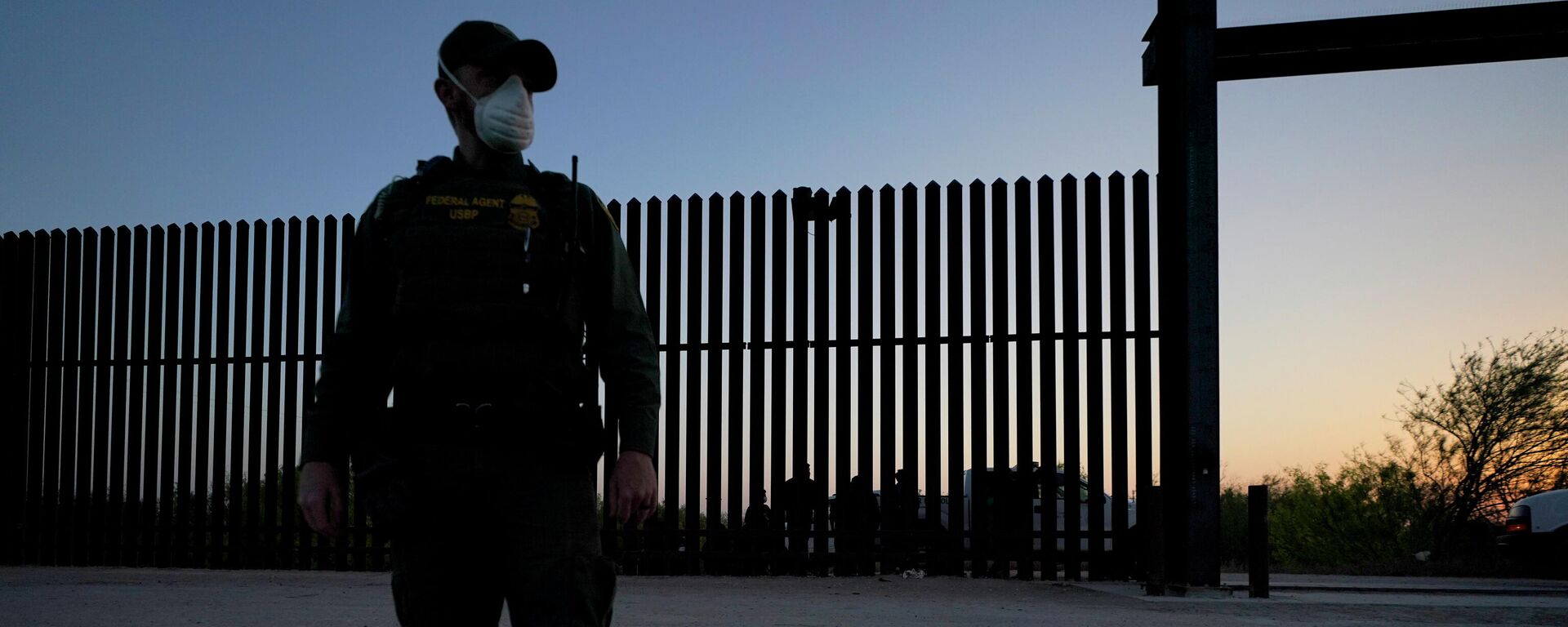Migrants Overwhelm US Southern Border City Days Before Title 42 Expulsion Policy Ends

© Sputnik / Kristopher Rivera
Subscribe
EL PASO (Sputnik) - Thousands of migrants are flooded around Sacred Heart Church in downtown El Paso, Texas, located a stone's throw away from the US-Mexico border, previewing a small piece of the chaos that may ensue once the Title 42 expulsion policy ends next week.
A massive surge of illegal immigration is expected to overwhelm the US southern border after the Trump-era public health emergency order - which allowed the US government to turn away migrants at the border to prevent the spread of COVID-19 - is set to expire on May 11.
Several migrants who talked to Sputnik believe it will be more difficult to gain entry into the United States once Title 42 ends because restrictions may tighten under other US immigration authorities.
Thousands of migrants sleep outside under blankets set up as tents around the church under conditions that are not hygienic. Although there are portable restrooms located nearby, portions of the makeshift camp around the church smell of urine.
An El Paso Police Department officer told Sputnik there are an estimated 1,700 migrants outside the premises of the church.
"We've had to sleep outside of the church, honestly it's been hard," Manuel Godoy, 38, of Venezuela, told Sputnik. "This is the life we were given, but we have a dream and have to fight for it."
Many of the migrants at the church are waiting to acquire additional immigration or travel documents from US immigration authorities, according to Godoy.
The migrants are mostly young adult men from Venezuela, a mix of documented and undocumented, but several dozen women and children are seen in the area as well. Migrants, Godoy said, began to gather at the church about a month ago, but the heavy presence began to form last week.

Migrants have camped out in the immediate area around the Sacred Heart Church in downtown El Paso, Texas, which is located a stone's throw away from the US-Mexico border.
© Sputnik / Kristopher Rivera
Joseph Escobar, 33, of Venezuela, said he entered the United States illegally after he was deported back to Mexico after turning himself in to US immigration authorities.
"It's been two weeks that they deported me, that day 6,000 of us turned ourselves in. They only allowed in 2,000 women and children, the rest of us were thrown out [deported] to Juarez," Escobar said.
Escobar said he's waiting for his family in Venezuela to send him money so he can facilitate his travel to Denver, Colorado, to visit a refugee agency that helps migrants continue to their destinations. Escobar said he plans to travel to Chicago to look for work.
Loly Gonzalez, of Venezuela, was one of the few women at the church with children.
"I don't have any family in the United States. I came with my two kids because the situation in Venezuela is difficult," Gonzalez said. "You can't afford anything even with three jobs. I want to reach New York to work and put the kids in school."
Border Security Concerns Escalate
The mayor of the city of El Paso recently declared a state of emergency to prepare for the anticipated surge of migrants in the region. El Paso has been one of several hot spots for illegal migration along the Texas-Mexico border. The Texas border cities of Laredo and Brownsville have also declared a state of emergency to prepare for a possible worsening of the border crisis.
In El Paso, sections of the US-Mexico border are bolstered with additional temporary fencing and barbed wire wrapped on top of tall bollard fencing along the border. There's also a heavy presence of Texas state police, US Border Patrol, and National Guardsmen all along the frontier.
The Biden administration announced on Tuesday 1,500 additional active-duty troops will deploy to the US-Mexico border in the coming days to support US Custom and Border Protection (CBP) efforts to prepare for the end of Title 42.
US troops will not engage with migrants considering they lack immigration enforcement authority, but will instead provide logistical support.
On Tuesday, the Biden administration announced 1,500 additional active-duty troops will deploy to the US-Mexico border in the coming days to support US Custom and Border Protection (CBP) efforts to prepare for the end of Title 42. US troops will not engage with migrants considering they lack immigration enforcement authority, but will instead provide logistical support.
According to a CBP spokesperson, migrants without proper immigration documentation to show they have entered the United States legally or have permission to lawfully remain in the county will be detained, taken into custody and processed in accordance with US immigration laws.
"In response to migrants evading apprehension in the El Paso area, the United States Border Patrol has increased the number of agents patrolling the area," the CBP spokesperson said. "Border Patrol Agents conduct enforcement actions in accordance with DHS [Homeland Security] policy. However, there are protected areas that Border Patrol Agents will have limited enforcement access."
Texas Senators Ted Cruz and John Cornyn during a Wednesday news conference warned the current flood of illegal immigration pouring over the US-Mexico border will turn into a tsunami when Title 42 ends.
Congressman Paul Gosar called the Biden administration's decision to send more troops to the border a political stunt.
"It’s a stunt," Gosar told Sputnik. "Troops are being sent to help welcome and process the lawbreakers entering our country not defend the border from the surge of invaders."
An all-time record number of migrants have arrived at the US southern border under the Biden administration, hitting two consecutive records in 2021 and 2022, exceeding 2.3 million people. In fiscal year 2023, the US authorities said they have encountered more than 1.2 million migrants.


